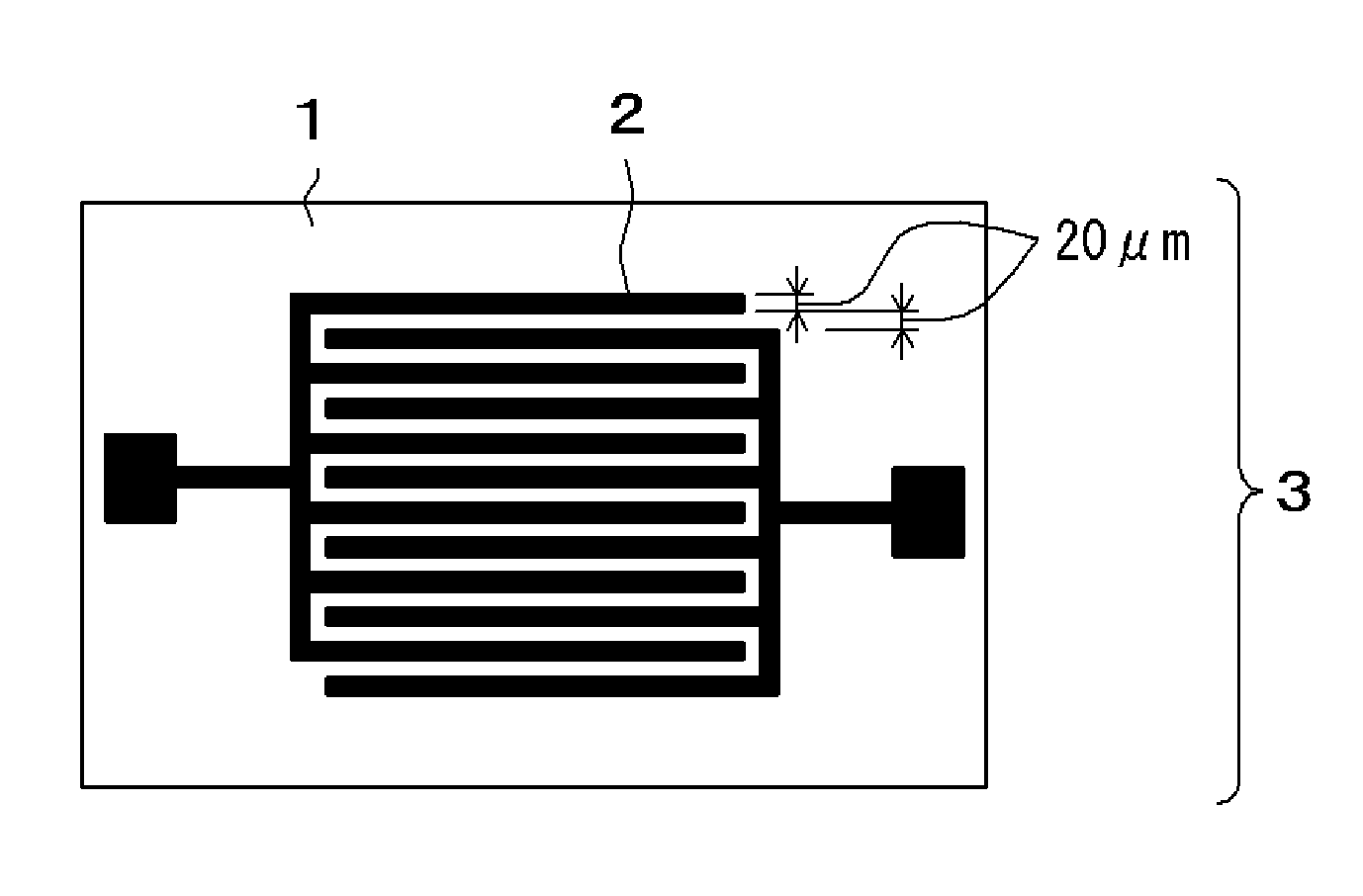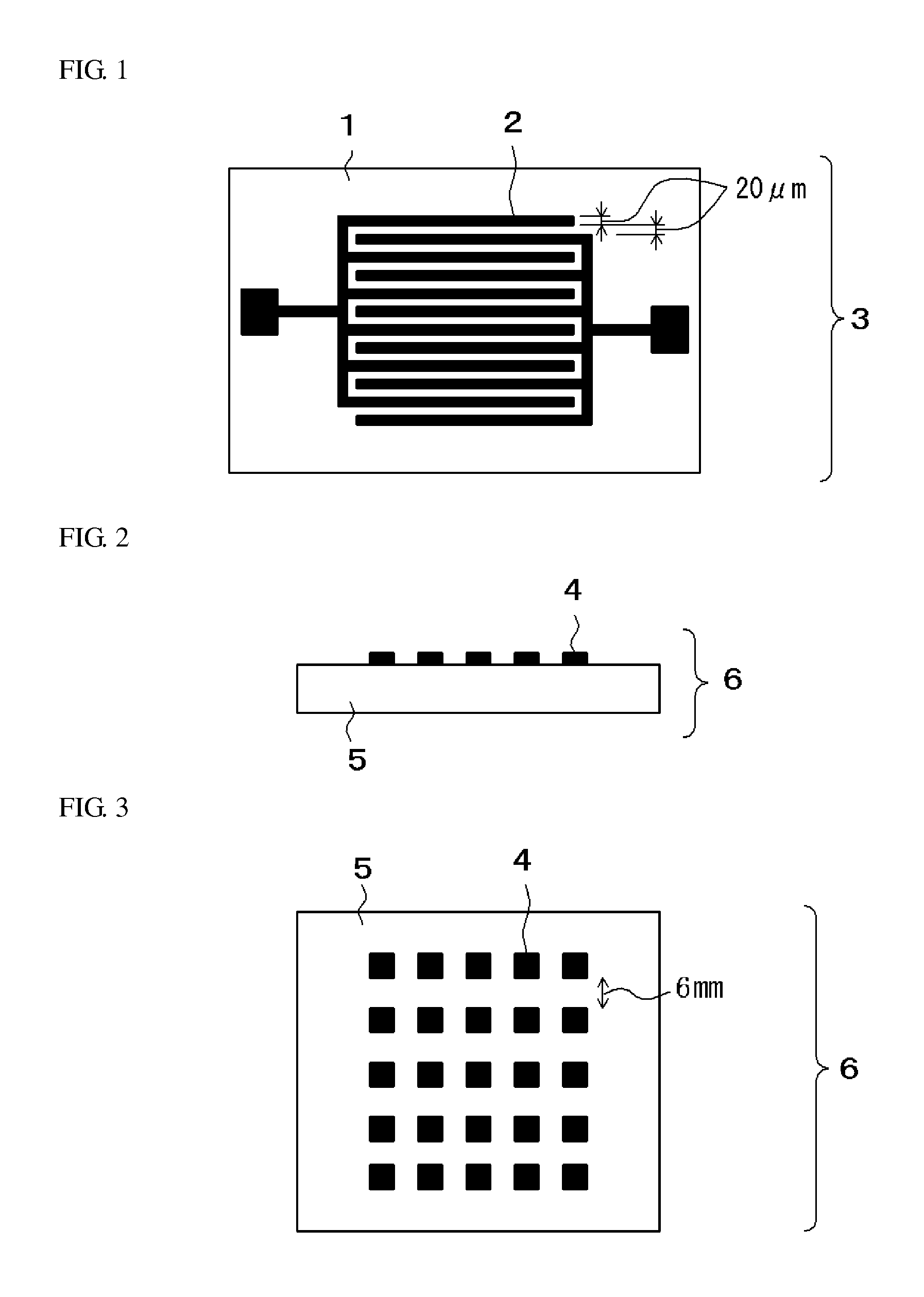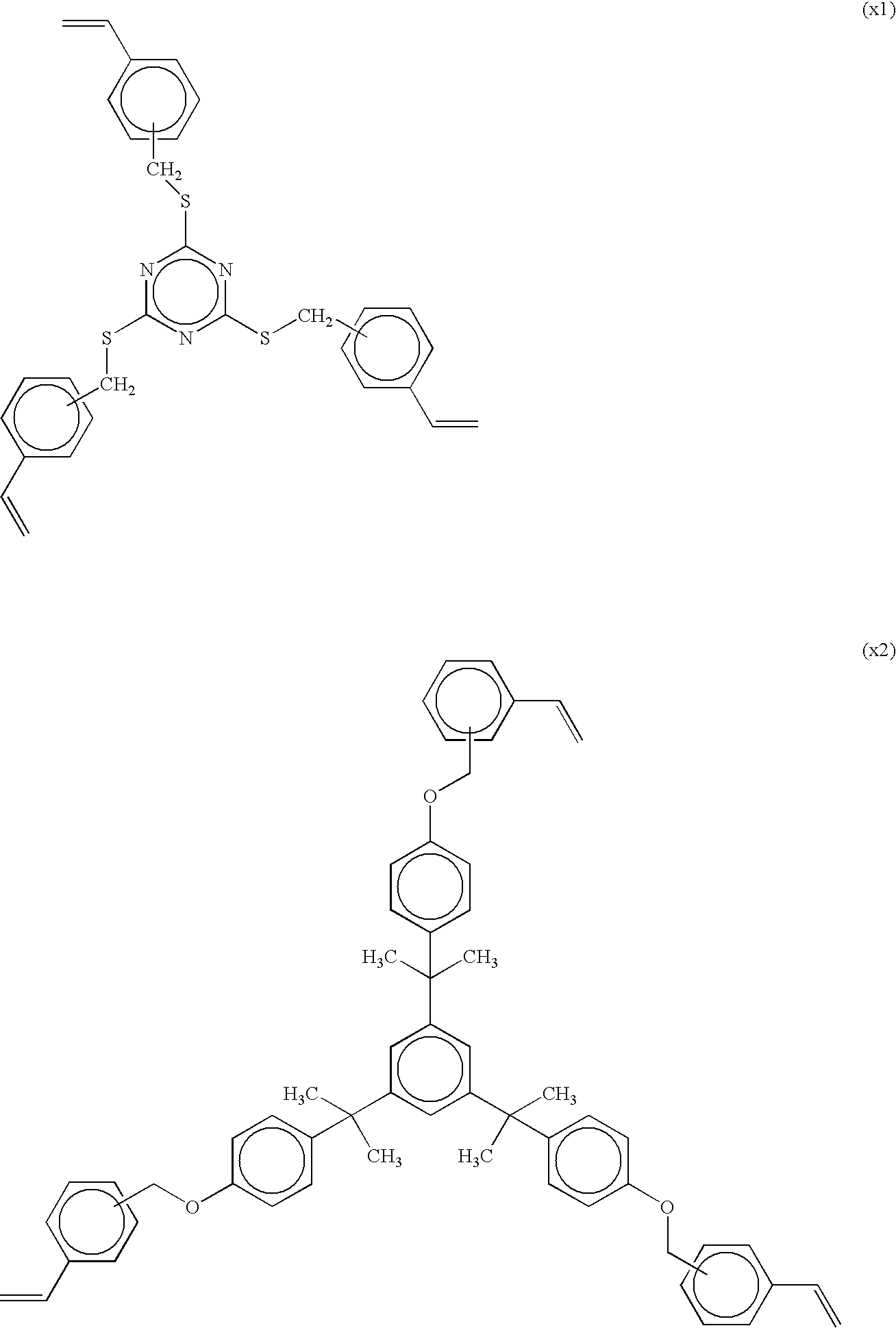Photosensitive insulating resin composition, cured product of the composition, and method of producing insulating film
a technology of insulating resin and composition, which is applied in the direction of photosensitive materials, instruments, photomechanical equipment, etc., can solve the problem of the difference between the coefficient of linear expansion of the wafer and the insulating film formed on the wafer
- Summary
- Abstract
- Description
- Claims
- Application Information
AI Technical Summary
Problems solved by technology
Method used
Image
Examples
production example 1
Synthesis of Resin (A-1)
[0127]1 part by mass of divinylbenzene (manufactured by Nippon Steel Chemical Co., Ltd., purity: 57 mass %), 60 parts by mass of p-t-butoxystyrene, and 4 parts by mass of styrene were dissolved in 150 parts by mass of propylene glycol monomethyl ether. The mixture was polymerized at 70° C. for 10 hours in a nitrogen atmosphere in the presence of 4 parts by mass of azobisisobutyronitrile. After the addition of sulfuric acid to the reaction solution, the components were reacted at 90° C. for 10 hours to convert (deprotect) p-t-butoxystyrene to p-hydroxystyrene. After the addition of ethyl acetate to the resulting copolymer, the mixture was washed five times with water. After isolating the ethyl acetate phase, the solvent was removed to obtain a divinylbenzene / p-hydroxystyrene / styrene copolymer (hereinafter referred to as “resin (A-1)”). The resin (A-1) was analyzed by 13C-NMR. The resin (A-1) had a content of the structural unit (a1-1) derived from divinylbenze...
production example 2
Synthesis of Resin (A-2)
[0129]A resin (A-2) was synthesized in the same manner as in Production Example 1, except for using 2 parts by mass of divinylbenzene and 65 parts by mass of p-t-butoxystyrene as the monomers. The resin (A-2) was analyzed in the same manner as in Production Example 1. The resin (A-2) had a content of the structural unit (a1-1) derived from divinylbenzene of 2 mol % and a content of the structural unit (a2) derived from p-hydroxystyrene of 98 mol %. The resin (A-2) had a polystyrene-reduced weight average molecular weight of 83,000.
production example 3
Synthesis of Resin (A-3)
[0130]A resin (A-3) was synthesized in the same manner as in Production Example 1, except for using 6 parts by mass of divinylbenzene, 60 parts by mass of p-t-butoxystyrene, and 4 parts by mass of styrene as the monomers. The resin (A-3) was analyzed in the same manner as in Production Example 1. The resin (A-3) had a content of the structural unit (a1-1) derived from divinylbenzene of 6 mol %, a content of the structural unit (a2) derived from p-hydroxystyrene of 84 mol %, and a content of the structural unit (a3-1) derived from styrene of 10 mol %. The resin (A-3) had a polystyrene-reduced weight average molecular weight of 104,000.
PUM
 Login to View More
Login to View More Abstract
Description
Claims
Application Information
 Login to View More
Login to View More - R&D
- Intellectual Property
- Life Sciences
- Materials
- Tech Scout
- Unparalleled Data Quality
- Higher Quality Content
- 60% Fewer Hallucinations
Browse by: Latest US Patents, China's latest patents, Technical Efficacy Thesaurus, Application Domain, Technology Topic, Popular Technical Reports.
© 2025 PatSnap. All rights reserved.Legal|Privacy policy|Modern Slavery Act Transparency Statement|Sitemap|About US| Contact US: help@patsnap.com



